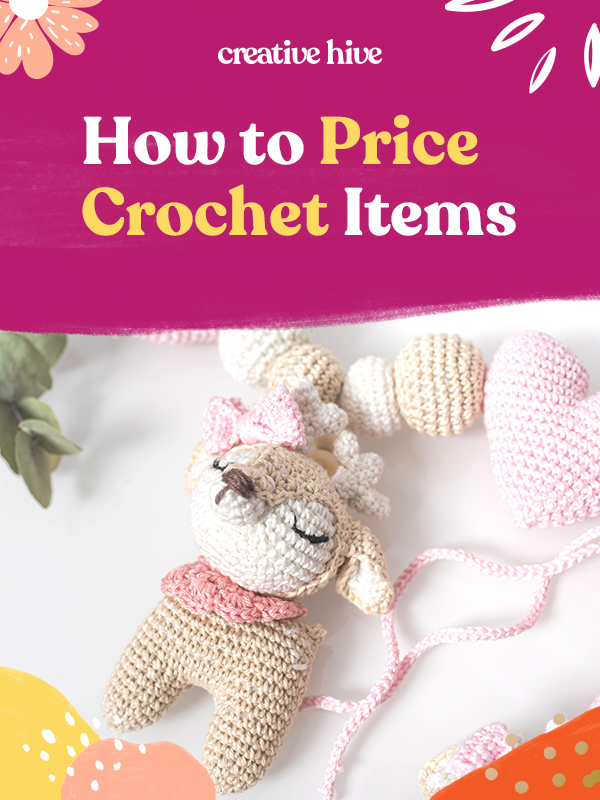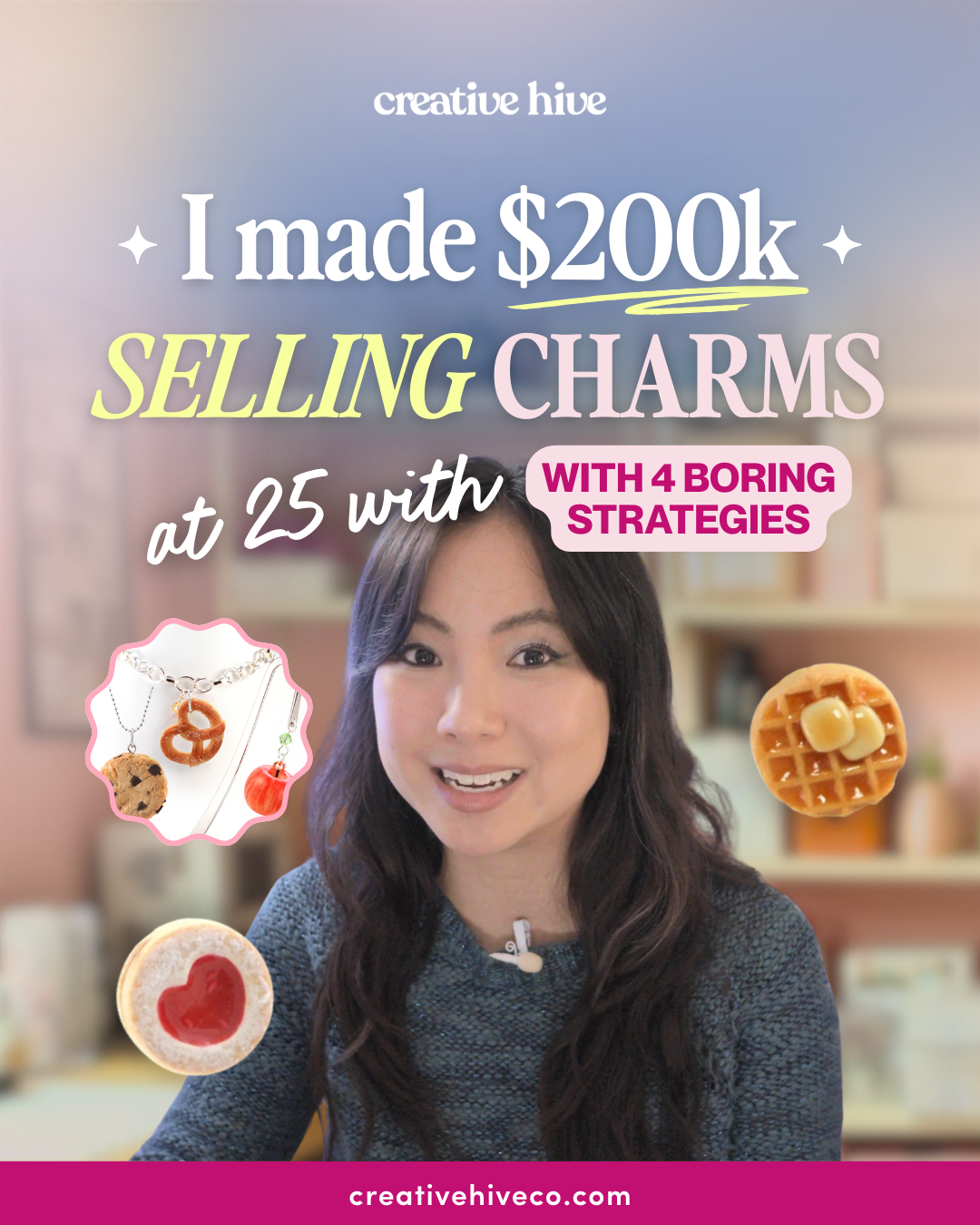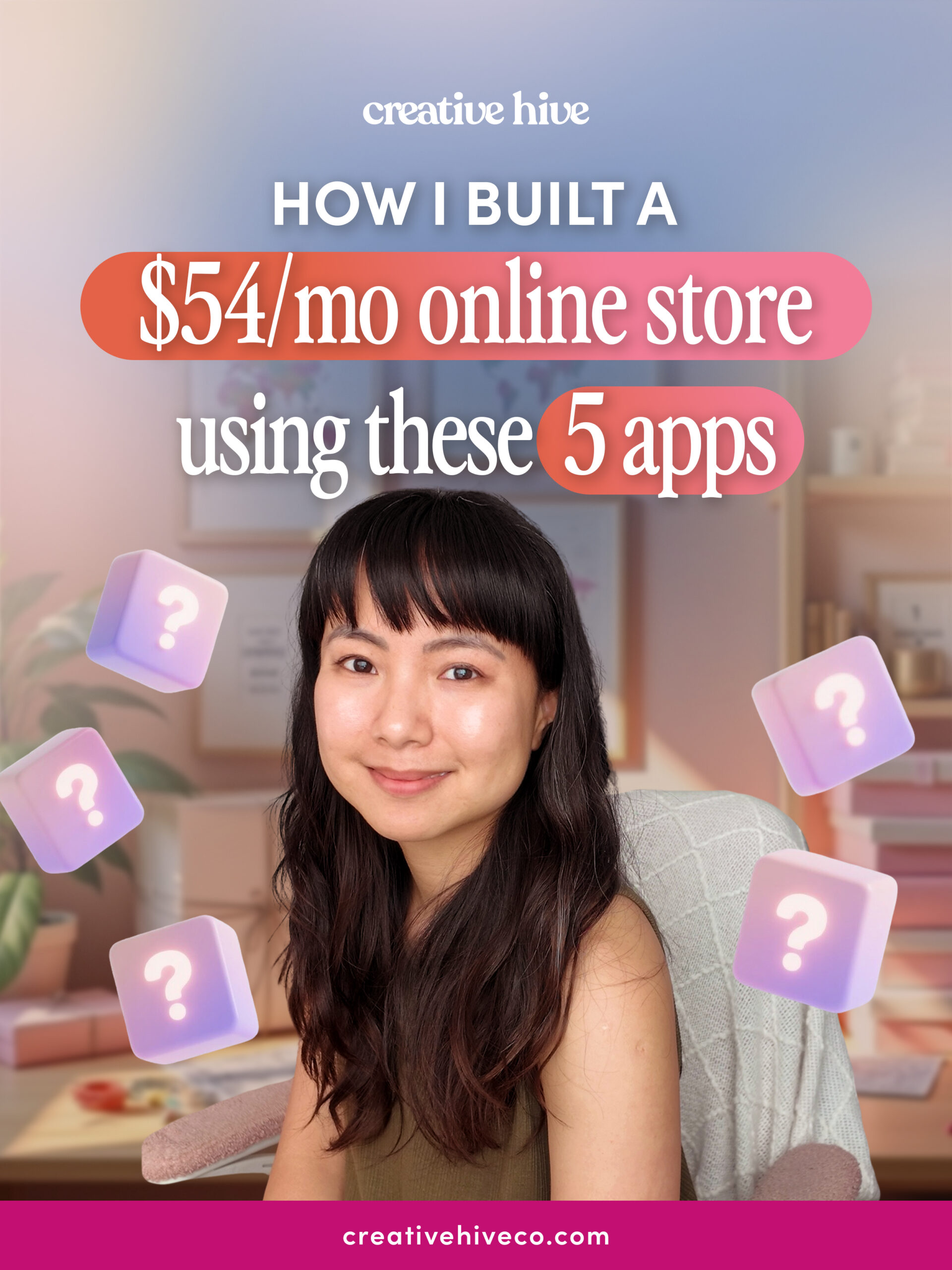I want to help you build a sustainable, profitable handmade business that makes you consistent income and sales. I only ever teach or recommend marketing, social media, pricing, production and branding tips that I’ve personally used successfully in my own 7-figure handmade businesses.
I'm Mei, from Los Angeles!
Read More
Popular Posts You'll Love
Looking for something?
Categories
starting a business
get more traffic
running a business
make more sales
branding
growing a business
mindset & productivity
podcasts
pricing & money
product photography
reviews
selling on etsy
selling on amazon
social media
selling wholesale
- Facebook0
- Twitter10
- Pinterest115
- 125shares
If you’re stumped on how to price your crocheted products then keep reading because today I’m giving you the 5 things you need to consider to keep your business profitable and making sales.
Pricing Crocheted Products
Crocheting, in terms of production, is a hard business to run.
It might take you two hours to make a baby hat, and even that is kind of fast.
But if you’re making something like a sweater we could be talking about dozens of hours to finish one product.
I have a standard pricing formula video, and with this formula, you take your time and your cost of materials and multiply it by 2 to get a wholesale price.
Then multiply it again by 2 to get the retail price.
This is multiplying your original cost by four or five times, depending on what you sell, to get a final retail price.
Say you’ve set your hourly wage to $20 an hour. If we ran my standard pricing formula on a crocheted hat, let’s say it took $5 worth of yarn, my formula would say that you need to charge $125 retail price for that hat.
Let’s be real, that’s probably not happening.
I could be wrong, maybe you have amazing branding and that price point works for you, but for most of us that’s not realistic.
This can lead to a bit of despair!
Does that mean you’re destined to work for less than minimum wage? Not exactly.
If you can keep these 5 considerations in mind when pricing your products, then you can absolutely make your crochet business work.
1. Research
This is where you’re going to have to do your research.
What are the competitor prices?
You really need to think about the value of the finished product to the consumer.
Not everything that you put equal amounts of time into is going to yield the same value to the consumer.
Let’s say it takes about the same amount of time to crochet one Afghan as it does 25 new wool hats.
Which one of those products earns more money?
You’re only going to get so much money for the Afghan even if it took you a whole week to finish, but you can get a premium on those hats.
So think about what niches earn the most money and have the most value as the finished items.
This could be anything from:
- Items for babies
- Special occasion items for quinceaneras
- Items for weddings
- Items for your monthly photoshoots that you do with babies
These are items that have high value!
Customization can play a big role here.
For example, items with someone’s name on it or in someone’s school colors, all of these things have a higher value to the customer.
They may be a little more complicated for you to do, but not as much as the value that they will get.
So look around!
This is where you have to do your research on the different kinds of items that you might want to offer and determine the top and bottom brackets of what the competitors are charging.
Then write them down because you’re going to need this information to figure out what you should be charging.
2. Add Value
This goes along with point one, I want you to think about what you can do to add value.
I already mentioned switching your niche a bit to these high value items and also adding in customization or upping your quality of materials a little bit.
As an example, if you used an organic cotton that was spun in the US that might double the cost of your yarn!
It might raise the cost to make by $5, but it would allow you to add $20 or $30 in value.
If you look up organic handmade hats, comparing factory produced ones also when you see those prices you’ll find that you’ll get a much higher bracket.
It’s certainly worth looking around for where you can add additional value to your products.
Packaging
Other places that you can add value that don’t necessarily have to do with the materials you use might be your packaging.
Anything you could do to make an item a little more luxurious can help you here.
Maybe it’s about putting a real fur pom-pom on the top.
Those are expensive, but it might be the sort of thing that elevates your item to a complete luxury product.
I’ve seen those go for pretty high price values.
Some other things you might include to give you a leg up are leather tags, or maybe hand-engraved metal tags.
All of these are value adding items that you want to think about that are not increasing the amount of time you spend per item.
3. Outsourcing
This is a really big one, can you afford to outsource the making of your products?
Let’s say you get super famous and you get put in a magazine and now you have hundreds or even thousands of orders coming in.
This is the best thing that could possibly happen to your business!
But if you can’t scale up, you’re not running a sustainable business.
I encourage you, when you’re working on your pricing, to check how much sample makers are charging.
Go to Ravelry, go to Facebook, discussion boards, go wherever and look around.
You want to look at what the sample makers are talking about.
Typically this number is calculated in the order of numbers of cents or dozens of cents per yard.
This will allow you to calculate, using the most up to date numbers, what your items would cost to have a sample maker make them.
Then if you do strike it big, your pricing will be ready to pay dozens or hundreds of sample makers to make your products.
Now, you’ll probably notice that sample makers aren’t making large amounts of money per hour.
But if you can’t bring on more staff and you can’t get these items made, then you can’t scale and your business isn’t going to grow beyond what you can do in your 8 or 10 hours a day.
It’s very important that the cost of paying a sample maker plus your profit is in your pricing.
4. Time
You need to ask yourself, how is your time being spent?
This is something that’s really important to think about when you’re talking about a handmade item that is, in a sense, portable and not tied down to a machine.
I make polymer clay jewelry and it is really hard to take that places.
I can’t take it on the subway without a lot of things rolling under the seat!
But crochet is a fundamentally different process.
You can actually do it while you’re carpooling to somewhere. You can do it at the park.
It’s so much easier to take on the go.
I am all about making a living wage, but you also have to think about the pricing and how this fits into the rest of your life.
If you make $20 an hour working, say, as a manager at Starbucks and you’re paying for childcare which on the low end might be $10 an hour, then you’re actually bringing home only the remaining $10 an hour.
On the flipside, say you’re crocheting and you’re able to be at home, at the park or you’re able to do it while you’re commuting. Is it important for you to make that $20 an hour or are you able to, because of the flexibility of your craft, realize that a lower price point is actually sustainable for your business?
Really think about what you are able to do at the same time.
I know when I watch my friends crochet, they’re actually able to watch TV shows, chitchat or whatever they’re doing at the same time.
So it’s not like they’re creating an item that’s taking 100% of their focus.
That’s something that needs to be considered.
If you’re really a genius and you can crochet while you’re house sitting, you can actually massively expand the amount of money that you’re making per hour.
5. Sources of Income
I want you to think about the other sources of income that you can get besides just selling your finished item.
An easy example that comes to mind is also selling the patterns!
Let’s say someone is using a pattern of a well known maker then compare that to someone who created their own design and now has the appeal of having an exclusive design branded to them.
Then they’re selling that pattern in a downloadable format for $5 or $7 for each sale.
Pattern sales are just one example of how these two businesses, the production and the design, can be symbiotic with each other.
Another item might be providing garments or renting out garments to photographers.
For example, you may make a product and then rent it out to people who are using them for photo shoots instead of just selling the items to the finished customers.
Then you can have a sample sale and sell that item at a discount, but still have made more money overall.
These are the spots where it works to get really creative with what you’re doing with your finished items and how you’re pricing your production.
Bonus Tip
I have a bonus tip #6 for you!
When you look at my standard pricing formula, realize that the hourly wage you set for yourself is one of the two ways you get paid when you sell a product that you’ve made.
You get paid for the time you’ve taken to crochet the product.
And you get paid an additional layer with your profits, which is where we take your material costs and time, multiply by two, and then multiply by two again.
Every time you multiply your costs, you’ve got this cushion of profit. And as a serious business, this figure is really what you should be paying attention to, not necessarily just the hourly rate.
Knowing this, you can be a lot more flexible with using a lower hourly rate in your pricing calculations because in reality, you’ll actually get paid a much higher per hour dollar amount because of your profits.
So these are five key areas to think about.
It’s not an exact formula because I’ll be honest, an exact formula isn’t going to work with a handmade item that is as time intensive as crocheting is.
But with these five tips, I think you’ll find a happy medium that allows you to make a really great handmade business.
I hope these tips on helping your crochet business are helpful to you.
[divider style=”4″]If you’ve enjoyed this post, have any suggestions of your own, or have any questions leave a comment below.
Don’t forget to check out my YouTube channel for more great tips!

Leave a Comment
Liked this article? Share it!
Unlock a Profitable Handmade Business
in Just 12 Weeks Without Using Etsy
or Social Media
FREE WORKSHOP
This workshop is for anyone who makes and sells a handmade or physical product, including jewelry designers, artists, paper designers, bath & body product makers and more!
What You'll Discover
The #1 mistake people make with Etsy & social media that causes shops to FLOP
The secret to making it with your handmade shop so it's no longer just a hobby
How to make sales in your handmade shop with ease so you can finally get to 6-figures
TAKE ME THERE
Your email address will not be published. Required fields are marked *
Leave a Reply Cancel reply
About
Blog
A Sale A Day
Student Login
Free Class
Contact
Terms
Become A Student
Watch On YouTube
Student Reviews
See My Handmade Shop!




Wow! It looks so cute. I will make it to send my friends. Thanks for sharing it and geometry dash lite.